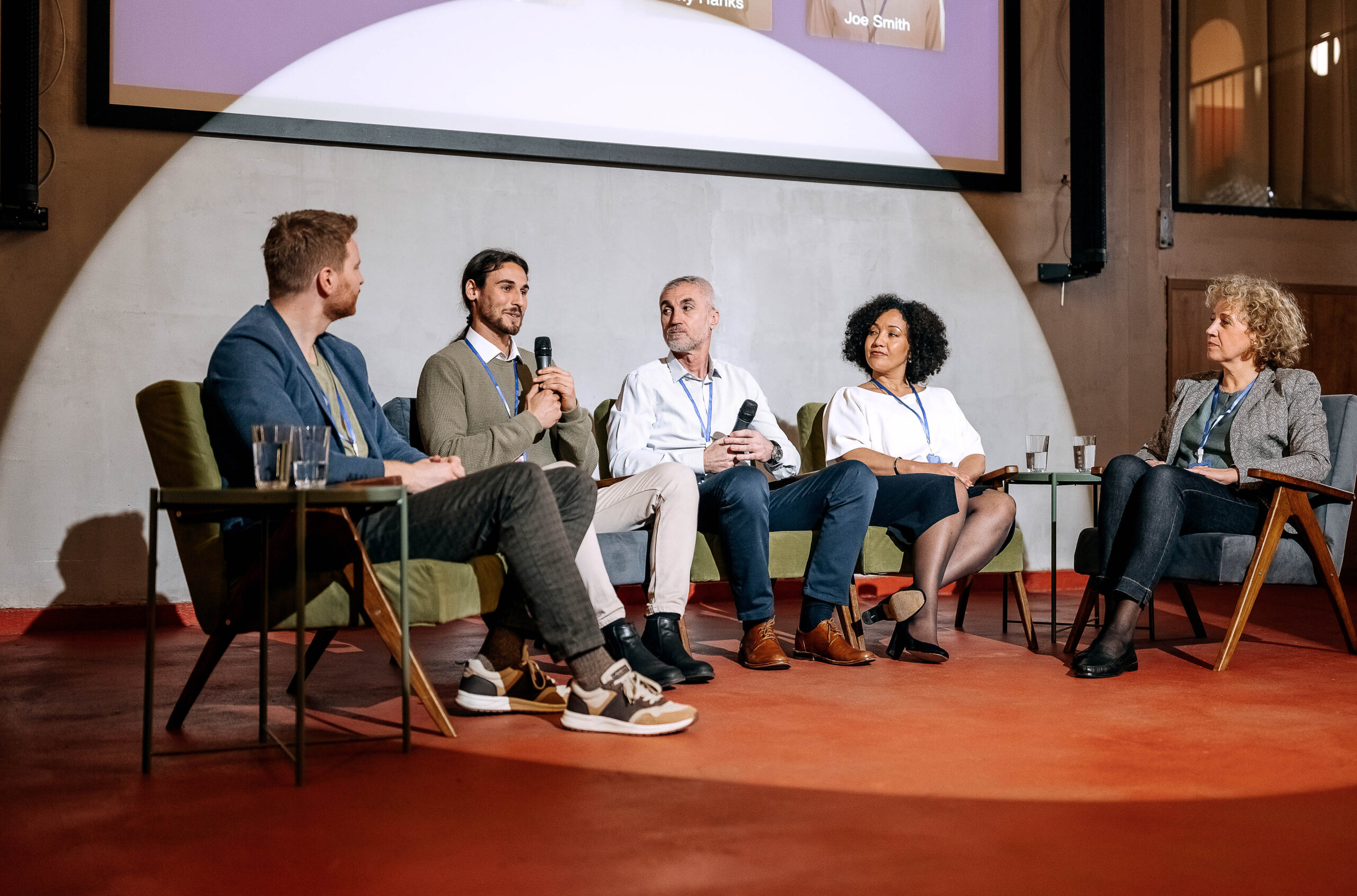SSHRC Insight and Insight Development Grant
Peer reviewer’s perspectives.

Q. It looks like my institution is going to take advantage of the volatility in the U.S. right now by poaching one or more U.S.-based faculty. What do established researchers new to the Canadian funding environment need to know to be successful with the Tri-Agency?
– Anonymous, Research Grants Facilitation
A. In many ways, moving to an institution in a new country is like going back to school: there are new people, new systems, new norms, maybe even new words to learn.
Anyone who is the first in their family to attend university knows about the hidden curriculum — the unwritten norms, values, behaviours, and expectations implicit within academia, distinct from disciplinary knowledge and methods. If you come from a family that has experience of university, you’re more likely to be equipped with the cultural capital necessary to navigate academic systems than someone who is a first-gen university student.
And the hidden curriculum isn’t bounded to degree programs: it persists among faculty roles as well.
Faculty members new to the Canadian funding system need to be aware of the presence of unwritten rules within the Tri-Agency. Consider, for example, equity, diversity, and inclusion (EDI). I recently found myself reading the Canadian Council of Academies’ report Equity, Diversity, and Inclusion in the Post-Secondary Research System, and found myself disagreeing with some of its findings, including its claim that applicants to SSHRC’s Insight Grant (IG) competition “are not required to explain the relevance of EDI to research design and practice in their proposals, and evaluators do not take these considerations into account during the peer review process” (2024, p. 102).
The evaluation criteria for the SSHRC IG may not state that peer reviewers are scoring applicants’ integration of EDI, access, Indigenization, decolonization, and intersectionality in the design of their research projects and their plans for student training, but—contrary to the report’s assertion—these factors are indeed considered during the peer review process. Talk to any recent SSHRC peer reviewer and they’ll verify that for you. I advise the researchers who I support that peer reviewers do want to see, for instance, disaggregated data analysis and inclusive, culturally safe working and learning environments for all members of a research team. EDI is being scored, even though it isn’t mentioned explicitly in the IG evaluation criteria.
Because I’ve long wanted to see the unwritten rules of research grant applications written down, I’ve been interviewing former Tri-Agency peer reviewers. In January 2025, I shared a document called Peer Reviewers’ Perspectives: NFRF Exploration & Transformation; in the coming months, I’ll be publishing the parallel documents for the CIHR Project, and NSERC Discovery competitions.
This month, I’m focusing on the SSHRC Insight and Insight Development competitions. I interviewed 49 former IG and Insight Development Grant (IDG) peer reviewers from across all the review committees in these two competitions; this free 46-page PDF contains what I heard from these interviews. In my opinion, the real gems are in the details—but because it would take me 46 pages to convey those details to you, I’d like to highlight my four key takeaways:
- The budget matters to the penny
The SSHRC IG & IDG peer reviewers pay a lot more attention during their scoring to the budget than do peer reviewers for CIHR Project and NSERC Discovery, with a good number of peer reviewers telling me that they see the budget as outlining what a particular project will ‘actually do.’
So, instead of saying that your flight to Toronto will cost $600, you should say that it costs $614 or $588—quote a number that shows that you looked up real costs and aren’t simply guesstimating.
In November 2024, I wrote an article outlining a three-part budget justification strategy that I recommend for SSHRC applicants:
- Justify why the expense is necessary;
- Justify where the numbers come from; and,
- Justify how the expense was calculated.
That specific article was written in response to an IDG applicant, but in truth I use this three-part strategy to explain budget expenses for all SSHRC competitions: the IDG, IG, Connection, Partnership—everything.
- You need to apply to the right committee
At SSHRC, if you’re a labour studies researcher interested in the representations of care work in Belgian graphic novels published in the 1930s, it may not be clear to you if you should apply to the literature committee, the committee that includes gender studies, or one of the multidisciplinary committees.
I’m always telling my SSHRC applicants to look up last year’s peer review committee members—Google them; find their bios—using the publicly published details on SSHRC’s Merit Review Committees page.
By looking up who has served recently on a specific committee, you can get a sense of the range of expertise, methods, and theoretical frames used by that group of peer reviewers. I find that researchers who gather this bit of extra data can make more informed choices than colleagues who are going only on the name of the committee.
- You want to write meaningful, appropriate training and knowledge mobilization plans
A lot of researchers who apply for SSHRC funding end up writing standard, conventional student training and knowledge mobilization plans. In the social sciences, students are supporting data collection and analysis, and then they’re co-authoring publications and co-presenting at conferences; in the humanities, the students are updating annotated bibliographies, and then they’re co-authoring publications and co-presenting at conferences. Across disciplines, researchers are promising to write journal articles or chapters for their monograph, to publish an edited collection or a special issue of a journal, to present at conferences, and to submit a piece to The Conversation Canada.
Such plans are fine—for many peer reviewers, they wouldn’t prevent a good project from getting funded—but in a tight funding climate, a compelling, original, feasible training or KMb plan that is well-suited to the project can help peer reviewers to distinguish between two otherwise excellent, important research proposals.
If you have a fascinating, important, feasible project, and someone else applying to the same committee has a fascinating, important, feasible project, AND a novel, compelling, feasible, appropriate, tailored student training or KMb plan, then they just might be able to eke out the extra point or half-point that they might need to lift their application just that touch higher in the committee’s ranking and thereby get funded over yours.
Having said that, it isn’t easy to come up with original, meaningful, feasible and novel ways to train students or share knowledge, especially if you’ve never engaged in original, meaningful, feasible and novel training or KMb in your own undergraduate or graduate degrees. Back in May 2024, I wrote about the University of Toronto’s novel ‘scholars in residence’ program for undergraduates; at UBC, the Arts Amplifier’s collaborative cohort projects offer paid work-integrated learning experiences to small groups of graduate students. If you do community-engaged research, could your RAs work for or with a partner organization for part of their training? Does your institution provide supports for experiential or work-integrated learning that could become a part of your student training plan?
If your institution has a strong program in communications, digital media, film, photography, or fine arts, you might be able to recruit talented trainees to support your knowledge mobilization plan—just make sure that there’s someone on the team who can provide them with discipline-relevant advice and feedback, so they’re both working and learning at the same time.
When it comes to knowledge mobilization plans, SSHRC peer reviewers repeatedly told me that the plans must align with the project—there must be a clear and logical fit. If you’re a social science researcher who is using PhotoVoice for data collection, then consider finding a way to enable research participants to opt-in to sharing their photos through an in-person or digital exhibition. Doing so would fit with the visual aspect of your methodology. If you’re a humanities researcher, consider experimenting with the strategies outlined in my February 2022 article, “Against utility and instrumentalization: knowledge mobilization for the humanities.”
If everyone applying to SSHRC is making a website, publishing on social media, hosting a one-hour public talk, or writing an article in The Conversation Canada, what can you do that’s different, but that also feels integral to your proposed research? The answer to that question can be a difference-maker for applicants in that frustrating ‘fundable but not sufficiently highly ranked’ zone.
Importantly, your novel student training or innovative knowledge mobilization plan needs to be feasible, which—for peer reviewers—usually means it’s something you’ve done before. If you’re proposing something new, consider bringing on a co-investigator or collaborator who can support your plans. Doing so will reassure your peer reviewers that you’re not risking drowning alone, overwhelmed by a situation you’ve never been in previously.
But that’s just the high-level overview. Different committees have differing expectations—you wouldn’t expect a reviewer in the fine arts to want to see the same things as a reviewer in business studies, would you? I conducted these interviews and am sharing these quotations in the hopes of getting more of the unwritten rules for Canadian research grants written down, spelled out, and made clear.
If you’d like, I can email you the full, free 46-page PDF Peer Reviewers’ Perspectives: SSHRC Insight & Insight Development Grant, along with the NFRF guide published earlier this year. I’ll also drop you a note when the parallel guides for the CIHR Project and NSERC Discovery are published in this column next month and the month after.
I’m coming to Congress! If you’ll be in Toronto June 3 to June 5 for the annual Congress of the Humanities and Social Sciences, please come see me at George Brown College. Join me at the Congress Expo, Booth 107, for writing advice on June 3 (2:30 – 3:30), June 4 (3:30 – 4:30) and June 5 (3:00 – 4:00).
Featured Jobs
- Engineering - Assistant or Associate Professor (Robotics & AI)University of Alberta
- Medicine - Associate or Full Professor Professor (Kidney Health)Université de Montréal
- Sociology - Tenure-Track Position (Crime and Community)Brandon University
- Architecture - Assistant Professor (environmental humanities and design)McGill University
- Finance - Faculty PositionUniversity of Alberta
















Post a comment
University Affairs moderates all comments according to the following guidelines. If approved, comments generally appear within one business day. We may republish particularly insightful remarks in our print edition or elsewhere.
1 Comments
You are so right about your first point, Letitia! In my first IDG application(unsuccessful) one of the reviewers explicitly said I did not consider EDI enough in my proposal, while it wasnt a criteria in the descriptions!